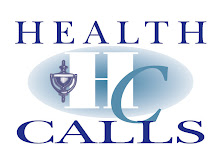For the half of Americans who take more than one prescription daily, life is about to change for the better, thanks to new onePACTM prescription packaging from Parata Systems.
onePAC prepares a person's medications by day and dosing time in a sealed, clear plastic packet that is arthritic-approved for easy opening. Each onePAC dose is custom-printed with the person's name; day and time of dose; medication names, strengths and descriptions; and other details to help them take the right medications at the right time, every time.
onePAC Helps Your Pharmacist Help You
Consumers request onePAC from their local pharmacy, so they keep that important care touch point with their local pharmacist. onePAC packaging is filled right at the pharmacy using Parata's automated technology, and verified by the pharmacist, who is most familiar with the patient's medication needs.
"If you or a loved one have faced the stress of missed doses of an important medication, or struggled to use a pillbox, the peace of mind and ease of onePAC packaging is immediately appealing," said Tom Rhoads, executive vice president for customer and market strategies at Parata Systems. "From caregivers and their family members, to parents whose children must take medications at school, to busy travelers — onePAC helps people know when and how to take their medicines, reducing risk and ultimately helping them live healthier lives."
How it Works
Rendering the "SMTWTFS" pillbox obsolete, a 30- to 90-day onePAC supply comes to patients as a perforated strip of individual onePAC packages, one for each dose, prepared in a convenient dispensing box that displays the next dose to be taken.
And it all happens right behind your pharmacy counter. Parata's new PACMED technology makes it affordable and efficient for local pharmacies to provide this valuable service to consumers. It automatically and accurately prepares up to 50 multi-dose packages per minute; a big improvement over traditional med-prep programs, which can be very time-consuming for pharmacy staff to administer.
Request Free Sample at www.myonepac.org or 1-888-onePAC1
onePAC packaging is available now at pharmacies across the United States and Canada. Interested consumers can visit www.myonepac.org or call 1-888-onePAC1 to learn more and to request a sample, which can be passed along to local pharmacists who don't currently offer onePAC packaging.
Better Adherence Improves Health, Lowers Healthcare Costs
Nearly one-quarter of long-term care admissions occur because someone is no longer able to safely and independently follow a medication regimen. Failure to take medication as prescribed impacts the effectiveness of the medication. It also contributes to an estimated $100 billion in additional healthcare costs annually, from increased hospitalizations, doctor visits, lab tests and nursing home admissions, according to the National Community Pharmacists Association.
Companies that work in the long-term care sector, such as LTC Solutions, Inc., are rallying behind this new technology and its implications for people who take medications, whether at home or in residential settings. "When it comes to helping people who take multiple medications take them consistently and safely, onePAC packaging is the wave of the future," says Patty Crawford, president of LTC Solutions. "The impact of the nursing shortage is forcing senior health care providers to seek safer and more effective ways to administer medications. Whether in long-term care settings or at home, onePAC packaging is a timely innovation in how medications are dosed. The impact on improved health and extended independence is incalculable."
About Parata Systems
Durham, N.C.-based Parata Systems, LLC, was founded in 2001 to offer industry-leading technology that improves consumers' safety and convenience at the key touch points in the circle of pharmacy care: fill, serve and adhere. Parata's solutions include: Parata RDS (Robotic Dispensing System) to improve the speed and reduce prescription errors in retail pharmacies; Parata eXpress APM to expand convenience, safety and privacy with self-service prescription pickup; and onePAC packaging, which improves patient safety by promoting adherence with customized, convenience packaging for medications. To learn more call, click or visit Parata Systems, www.parata.com, info@parata.com, 1-888-PARATA1 (727-2821


